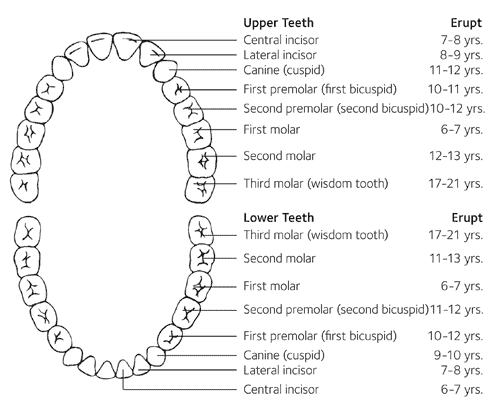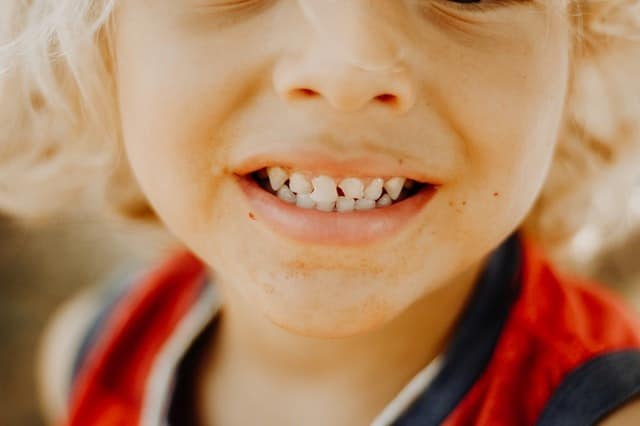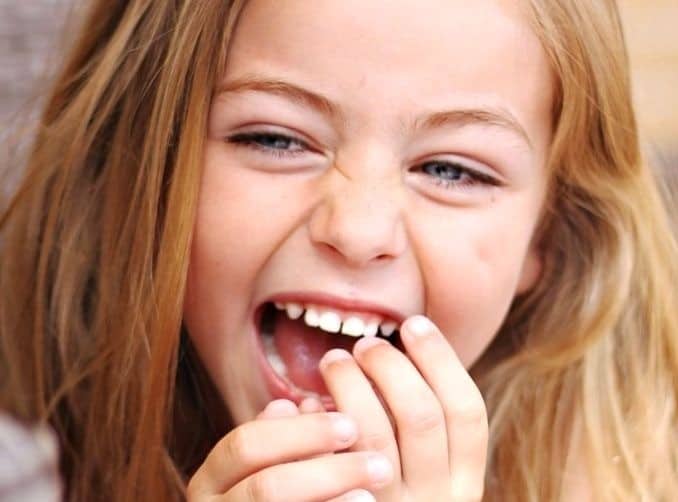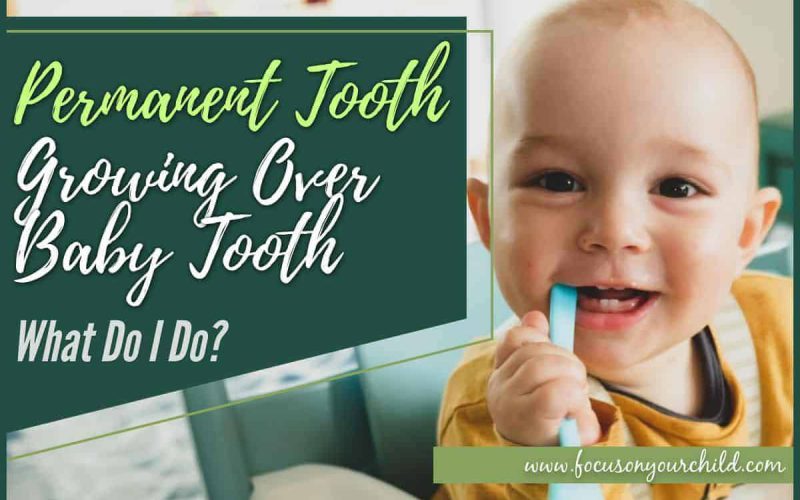Most children will have a complete set of teeth by the age of 3 known as milk teeth. These baby teeth start falling out, one by one, between the ages of 5 and 7. The shedding of teeth usually happens smoothly – the baby tooth falls out, and the permanent replacement tooth emerges from the vacated spot. However, sometimes, minor problems may occur during the process.
One of the common dental concerns parents have when their children start losing their baby teeth is when a permanent tooth starts growing out before the baby tooth is shed. This may leave your child with two teeth in roughly the same spot. When this happens, a good idea is to check with your dentist, who will determine whether or not an extraction is needed.
While permanent tooth growing behind a baby tooth looks concerning, do not worry – it is actually quite common and seldom causes problems. Keep on reading to learn more about this condition and what you should do if your child’s baby tooth refuses to make way for an erupting permanent tooth.
Understanding Your Child’s Teeth

Deciduous teeth, commonly referred to as milk teeth or baby teeth, start to erupt and come out at around six months of age. There is a total of 20 primary teeth – 10 in the lower mouth and another 10 in the upper mouth. This set is typically complete by the time the child is 2 to 3 years old.
Children start to lose their baby teeth at about 5 to 7 years old. A baby tooth falls out because the permanent tooth is growing behind it. Slowly, the permanent tooth pushes the baby tooth out of the way and takes its place. At around the age of 12 or 13, most children will have lost all their milk teeth and have a complete set of permanent teeth.
This chart from the American Dental Association can help you determine when each of the permanent teeth usually comes out:

The permanent set of teeth is comprised of 32 teeth, 12 more than the original set of primary teeth. The last set of teeth to come out are the wisdom teeth, one tooth at each corner at the back of the gums, between 17 and 25 years old.
Whatever dental developmental stage your child has attained, you can benefit from learning and understanding the different ways the teeth may come out. Give particular attention to the signs that your child may need pediatric dental help.
Permanent Teeth Growing Over Baby Teeth: What You Need to Know

Sometimes a permanent tooth can grow on top of a child’s baby tooth, leaving the child with two teeth in approximately the same spot. This means that even though the baby tooth has not fallen out, the permanent tooth began to emerge and connect to the nerve.
Shark teeth is the term commonly used to refer to this condition. The permanent tooth sprouts behind the baby tooth, leading to two rows of teeth. The nickname comes from the fact that sharks also have a double row of teeth.
If the primary tooth does not fall out naturally, food can get stuck in between the teeth, which can lead to tooth decay. It is important to consult with your dentist to determine whether or not the extra tooth is putting your child at risk for any of the following:
- Cavities
- Overcrowding and misalignment problems
- Toothaches
- Risk of infection
Why Baby Teeth Sometimes Do not Fall Out Normally

There are three primary reasons why a permanent tooth sometimes come in even before the baby tooth is out.
When the permanent tooth begins to come out, it generally pushes against the roots of the baby tooth, causing the roots connecting the baby tooth to the gum line to dissolve. Once enough of the root is dissolved, the baby tooth loosens out and eventually falls out. When the permanent tooth starts to come out behind the baby tooth, however, it can miss the roots of the baby tooth. The roots will not dissolve, and the permanent tooth is forced to grow behind the baby tooth.
Another reason for shark teeth to develop is when there is moderate to severe dental crowding, which prevents the permanent tooth from growing properly.
The third and least common reason is when the permanent tooth is completely or partially undeveloped.
Shark teeth tend to occur most commonly with the lower incisors, but may also take place where the upper incisor teeth or primary molars grow. When permanent tooth growing the over baby tooth involves the lower and upper front teeth, there is a good possibility that the same condition will occur to the teeth next to them.
Treatment Options

In most cases, no treatment is required for shark teeth. There are, however, a few solutions for this condition, which include the following:
Give the Baby Tooth Additional Time to Fall Out on Its Own
If a permanent tooth has not come in all the way and the primary tooth is getting progressively looser, parents do not have to worry as this condition will likely resolve on its own. Encourage your child to wiggle the baby tooth to further loosen it and wait until the tooth naturally comes out.
Tooth Extraction
Once the permanent tooth has erupted to about 75 percent of the way, or when your child is already out of the normal permanent tooth eruption time frame, your dentist will likely extract the baby tooth.
The new tooth usually moves forward into the proper place once the baby tooth that got in the way is gone. It can take several weeks, sometimes months, for the new tooth to fully settle into the correct position.
What If I Do Nothing?
Occasionally, if the baby teeth do not fall out in a timely manner causing permanent teeth to grow behind them, the teeth will begin to deflect. The teeth move out of position or proper alignment, which may cause potential future orthodontic problems.
After an evaluation, if your child’s dentist determines that an extraction is the best solution, usually it will be a relatively easy appointment. Overall, the roots of a baby tooth are much shorter and smaller, so they can be removed far easier than an adult’s permanent tooth.
Summing It Up!

The permanent tooth normally develops just beneath the baby tooth. Once the permanent tooth is ready to come out, it starts to dissolve out the baby tooth’s roots, which will cause the baby tooth to loosen and eventually fall out. The ultimate goal of the new, permanent tooth is to occupy the same spot in the gum previously occupied by the baby tooth.
Sometimes, however, a permanent tooth does not develop quite as expected. How to deal with the development of shark teeth varies. If a baby tooth remains solid with the permanent tooth growing over it, the best course of action is to make an appointment with your dentist to have your child’s teeth examined.
As a parent, it is but natural to be worried when you see that your child’s permanent teeth are not developing normally. By knowing that permanent tooth growing over baby tooth is not only common among children, but also quite easy to manage, you can take the appropriate steps to treat them without too much stress!
